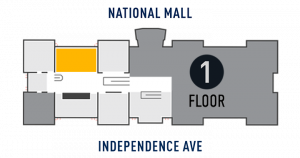Liberty 12 Model A (Lincoln) V-12 Engine
The Liberty's purpose was American mass production of standard engine units when the U.S. entered World War I. Co-designed in a week in mid-1917 by Jesse Vincent of Packard Motor Car and Elbert Hall of Hall-Scott Motor Car, with a planned series of 4-, 6-, 8-, and 12-cylinder models, the Liberty used only proven components to ensure workable engines in the shortest time. The Model L-8 was the first Liberty engine. However, power requirements made it obsolete before entering service, leading to the twelve-cylinder Liberty.
The Liberty's success was due entirely to the fact that the best engineers, production experts, and manufacturing facilities were provided to the Government. Leading automotive manufacturers, including Ford, Lincoln, Packard, Marmon, and Buick, built the engines.
The Liberty 12 Model A powered numerous aircraft including the de Havilland DH-4, the Navy-Curtiss NC-4, Fokker T2, Loening Model 23, Douglas World Cruiser, Douglas M-1 Mailplane, and Curtiss H-16 flying boat.
This object is on display in America by Air at the National Air and Space Museum in Washington, DC.

Jesse G. Vincent
3-D (overall, including stand): 175.3 × 83.8 × 143.5cm (5 ft. 9 in. × 2 ft. 9 in. × 4 ft. 8 1/2 in.)
Ferrous Alloy
Copper Alloy
Adhesive Tape
Rubber
Plastic
Metal Alloys
Paint
Solder
For more information, visit the Smithsonians Terms of Use.